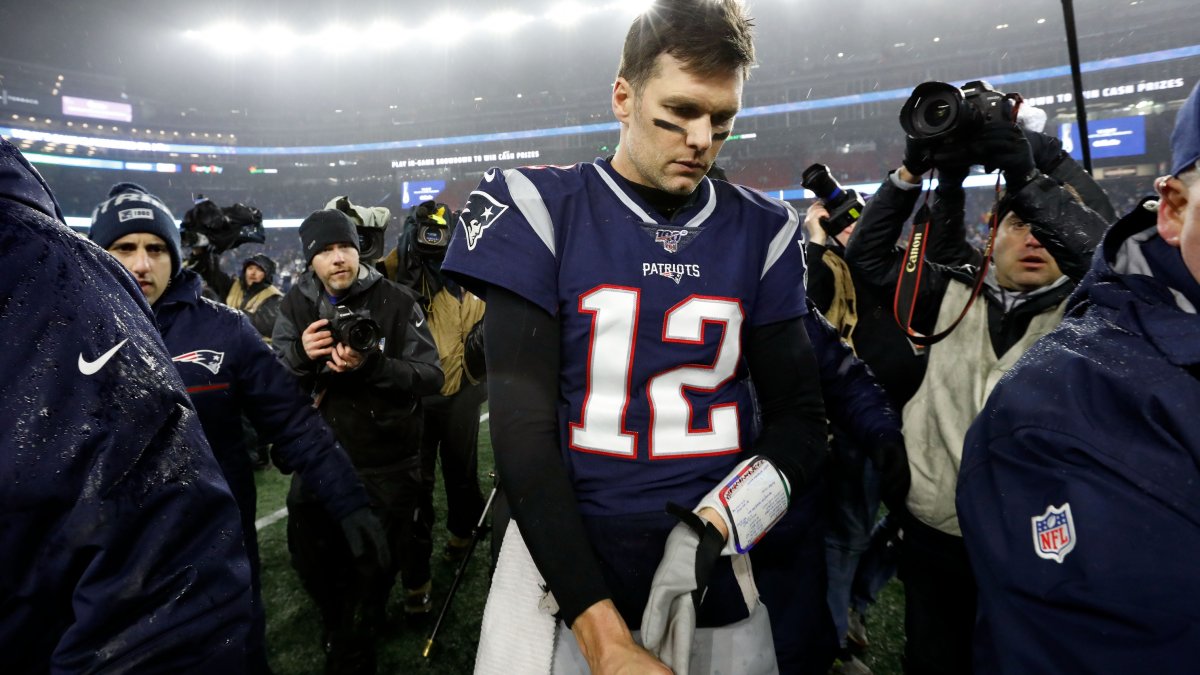When the Minnesota Vikings scored the winning touchdown in overtime last Sunday, it marked not only the end of the New Orleans Saints’ season but also the elimination of most of the NFL’s old guard of quarterbacks — a group of players who have dominated football for well over a decade.
Tom Brady and the New England Patriots lost the night before. Philip Rivers didn’t make the playoffs with the Los Angeles Chargers, Ben Roethlisberger didn’t make it beyond the second game of the season after injuring his throwing elbow and Eli Manning was benched midway through the season to elevate No. 6 overall pick, Daniel Jones, into the starting role.
All five quarterbacks were drafted from 2000 to 2004, and during their careers, they accounted for a combined 766 regular-season victories, 64 playoffs wins and 11 Super Bowls. But now, each quarterback is facing question marks entering the 2020 season. All except Manning — and possibly Rivers — are expected to come back next season, though perhaps not as the starter for their current teams. Rivers is the youngest of the two, having turned just 38 years old in December, but their advancing age has been accompanied by signs of decline over the last season. The question for current and inquiring front offices is how much time each has left and how we can expect them to perform next season as they get one year closer to the end.
Great work has been done by PFF’s Scott Barrett on positional aging curves as they relate to fantasy scoring, and Football Guys’ Adam Harstad has produced breakthrough research showing that the aging effect for NFL players is more like a mortality table: Players don’t as much decline with age as become more likely to fall off of a cliff they older they are. The larger conclusion has been that it’s difficult to identify a lull in production from the beginning of the end — by the time you recognize that it’s over, it’s usually too late.
Keeping the lessons of past research in mind, I wanted to see if the comprehensive data available to PFF could provide more clues or warning signs for when a quarterback has started an inextricable decline. Beyond the standard box-score stats and age info, we have access to grade on a play-by-play basis, advanced efficiency metrics like expected points added (EPA) and the ability to split data by pressured and play-action passing.
By digging into a limited but fruitful dataset for older quarterbacks who finished their careers between 2006-2019, we find that most measures of quarterback performance don’t show real signs of decline until the very end, as you’d expect from the mortality table analogy above. However, there are a few measures that consistently show a decline in aging quarterbacks a year before their final seasons. At the same time, some measures show little to no decline at the end of a quarterback’s career, so this will help us swat away the declarations of imminent collapse from those who fixate on such metrics.

DOMINATE FANTASY FOOTBALL & BETTING WITH AI-POWERED DATA & TOOLS TRUSTED BY ALL 32
 Unlimited Fantasy League Sync
Unlimited Fantasy League Sync
 Fantasy Start/Sit Line-Up Optimizer & Waiver Wire
Fantasy Start/Sit Line-Up Optimizer & Waiver Wire
 WR-CB & OL-DL Matchups, PFF Player Grades, & Premium Stats 2.0 Tools
WR-CB & OL-DL Matchups, PFF Player Grades, & Premium Stats 2.0 Tools
 Nathan Jahnkes Rankings - #1 Most Accurate Last 70 Weeks
Nathan Jahnkes Rankings - #1 Most Accurate Last 70 Weeks
 PFF Best Bets, Player Props, & Power Ranking Tools
PFF Best Bets, Player Props, & Power Ranking Tools
 NFL Mock Draft Sim with Trades & Draft Grades
NFL Mock Draft Sim with Trades & Draft Grades
Already have a subscription? Log In



 © 2024 PFF - all rights reserved.
© 2024 PFF - all rights reserved.